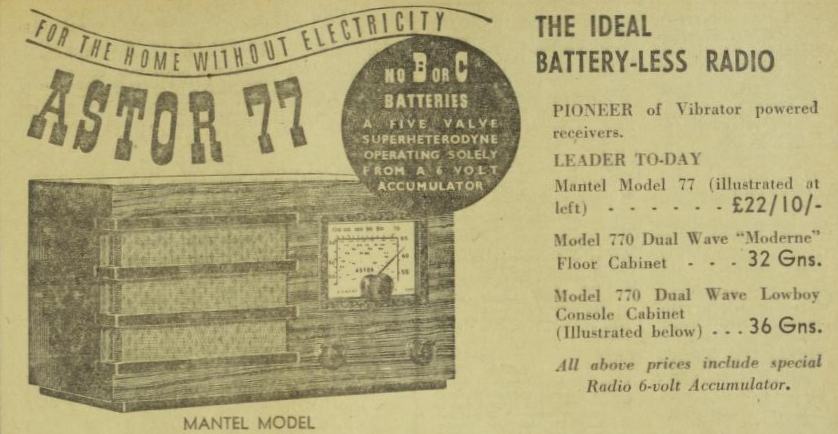
One of the early domestic vibrator sets was the 1937 Astor 77.

One of the early domestic vibrator sets was the 1937 Astor 77.
A variation of the domestic vibrator set allowed for direct operation from a 6, 12, or 32 V DC home lighting plant. As with car radios, these sets use indirectly heated AC valves, to cope with the widely fluctuating supply voltage, and to provide a higher audio output. The higher current consumption becomes acceptable when the generator is on site. Nevertheless, these sets generally also use a synchronous vibrator. One such set was the Breville 742, described in Radio Waves, January and July 2024, and covered on this website here https://www.cool386.com/breville_742/breville_742.html
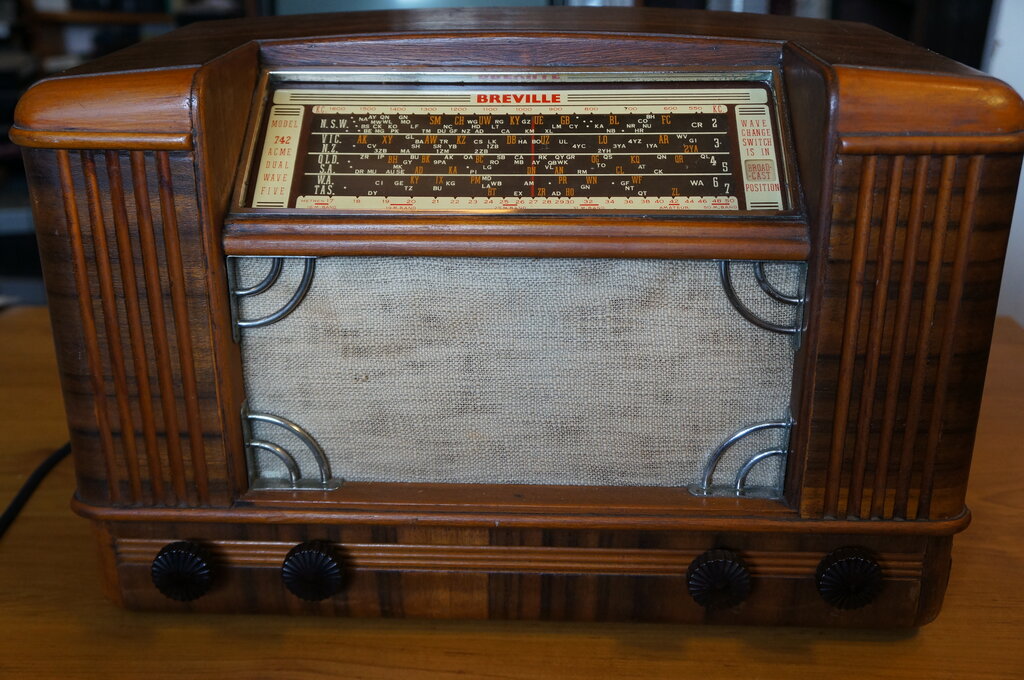
Breville 742 operates from 12 V DC.
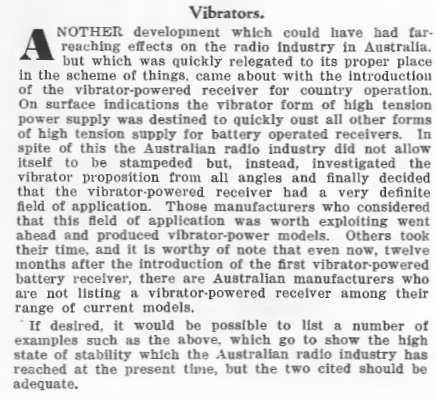
From the 1937 Radio Trade Annual.
Vibrators in Australia.
Initially, vibrators were imported from
the U.S. One example was the Electronic Laboratories eliminator, as shown
in the 1933 Levenson’s Radio catalogue.
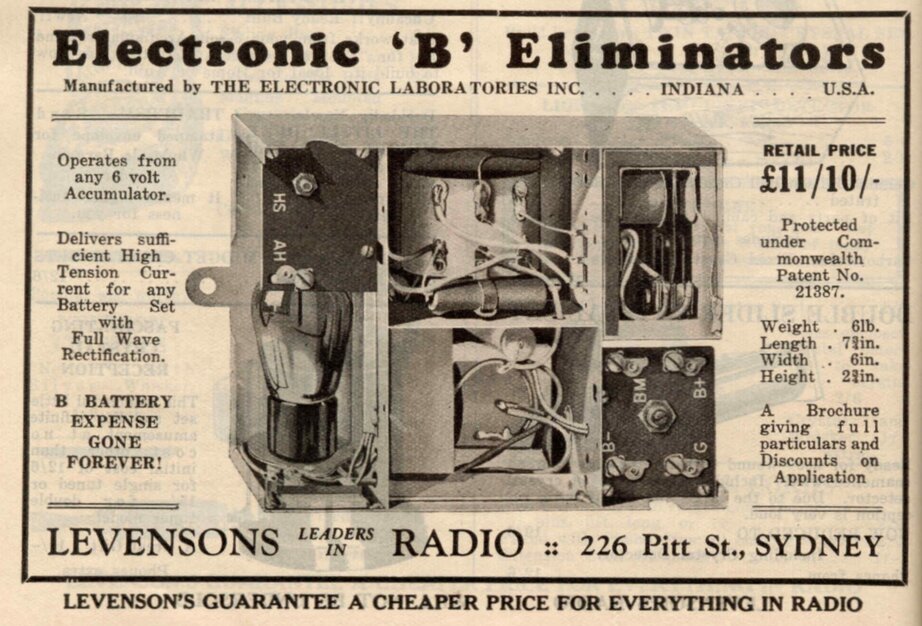
Electronic Laboratories eliminator imported in 1933.
EL also provided vibrators for AWA sets until local manufacture began. From 1936, firms such as RCS Radio and Radiokes were making vibrator units available to convert domestic battery sets, and for constructing car radios. The RCS Radio unit, described in Wireless Weekly, November 4th, 1938, was available in kit form.

RCS vibrator power supply.
ETC Industries announced the importation of Mallory vibrators in 1939.
Australian Manufacture.
Vibrator manufacture commenced in Australia
around 1938-1939, and with tariff policies, virtually ended importation
of the U.S. product. Some English made Plessey vibrators were later imported
as part of other equipment, notably EMI (HMV/Smiths/Radiomobile) car radios,
and the Ekco TX-275 9” portable TV.
Ferrocart vibrators, produced locally by Electronic Industries Limited, were mostly a clone of a Utah design. They were almost exclusively used in Radio Corporation products (Astor, Air Chief, etc.). Ferrocart vibrators are shunt drive, except for at least one military type. Most types operate at 100 or 150 Hz. For details on Ferrocart vibrators, see https://www.cool386.com/vib/ferro.htm
More common is the Oak vibrator, manufactured by AWA under licence to Oak Mfg. in Chicago, and used by almost everyone else. This was rather fortuitous, not only because of the separate drive design, but also generally superior construction, which has given exceptionally good reliability, as shown by experience. Operating frequency is 100 Hz. To avoid branding conflicts for other manufacturers using this vibrator, it was soon branded MSP (Manufacturers Special Products) – the component division of AWA. The Oak vibrator is described in detail at https://www.cool386.com/msp/msp.html
Another Australian made vibrator is the Van Ruyten, which is a 50 cycle type used for 240 V inverters. It appears to be based on an ATR (American Television & Radio) design. Like most high power inverter vibrators, it is separate drive. This is because the higher drive coil current begins to otherwise interfere with transformer operation. It also ensures that frequency stability is load independent.
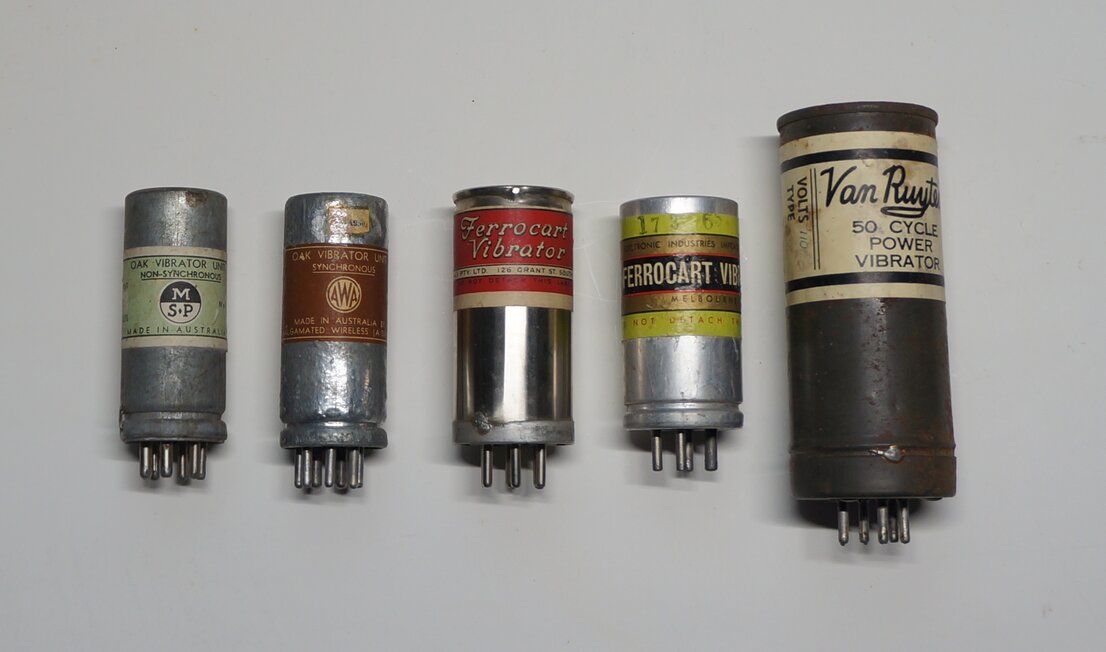
Australian made vibrators.
World War II.
Conveniently, the technology had been
perfected in time for WWII. All manner of portable, mobile, and airborne
transmitting and receiving sets required vibrators. However, the motor-generator
experienced a revival, since it was more suited to some applications, where
noise and efficiency were unimportant.
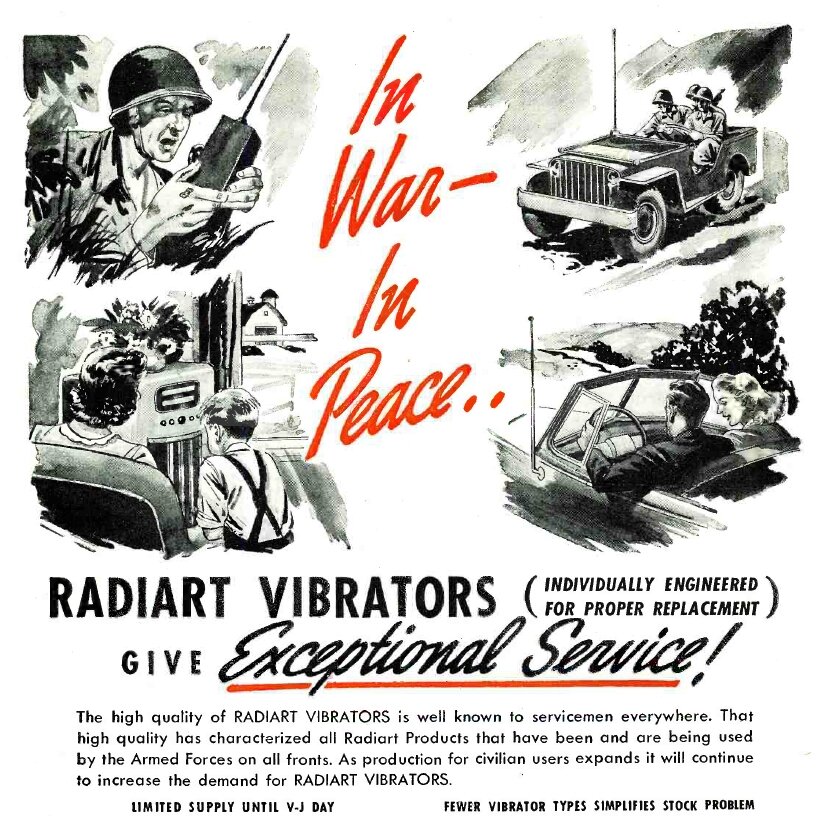
Vibrator technology peaked post war. The rapid increase in car ownership created a greater demand for car radios, with AWA, Astor, and Ferris being the prominent Australian manufacturers. Mobile two way radio was becoming commonplace, with the Pye Reporter and AWA Carphone being typical of vibrator powered transceivers.
DC to AC Inverters.
The AC output from a vibrator transformer
can of course be used directly. Operation of 240 V appliances then becomes
possible from a mobile supply, or a home lighting plant.
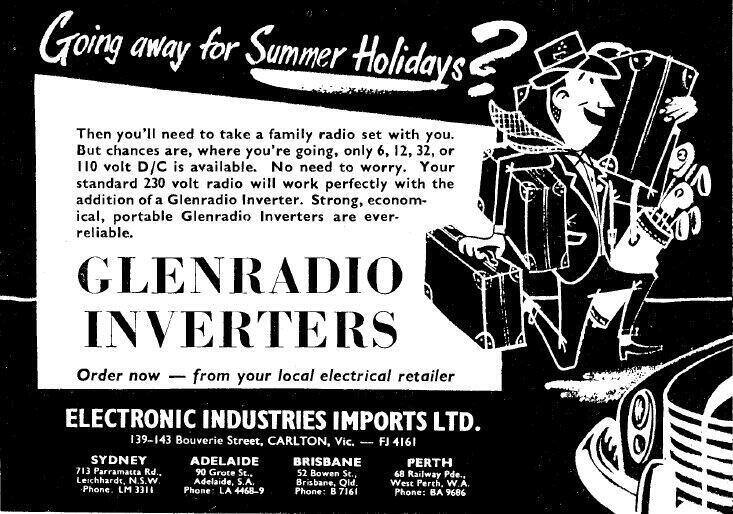
The 1950s brought us shaver inverters. How many people actually shaved in their car is open to question, but with the amount of such devices in my collection, they must have been popular. These use a radio vibrator to produce 240 V 100 Hz, or DC by synchronous rectification; both of which suit motor driven shavers. Typical is this Bland Radio inverter which provides 15 W:
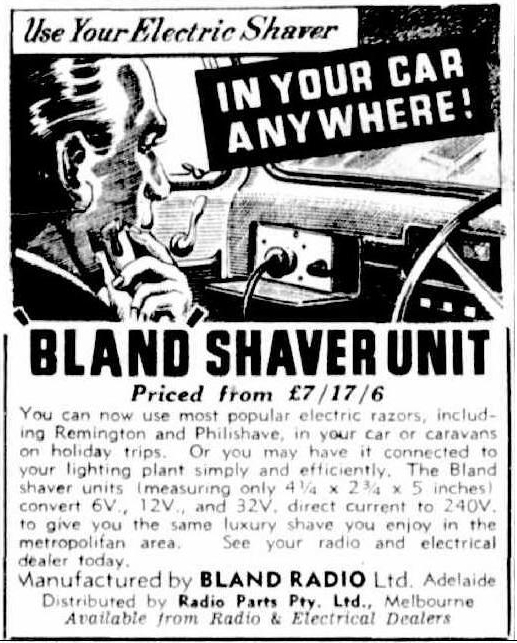
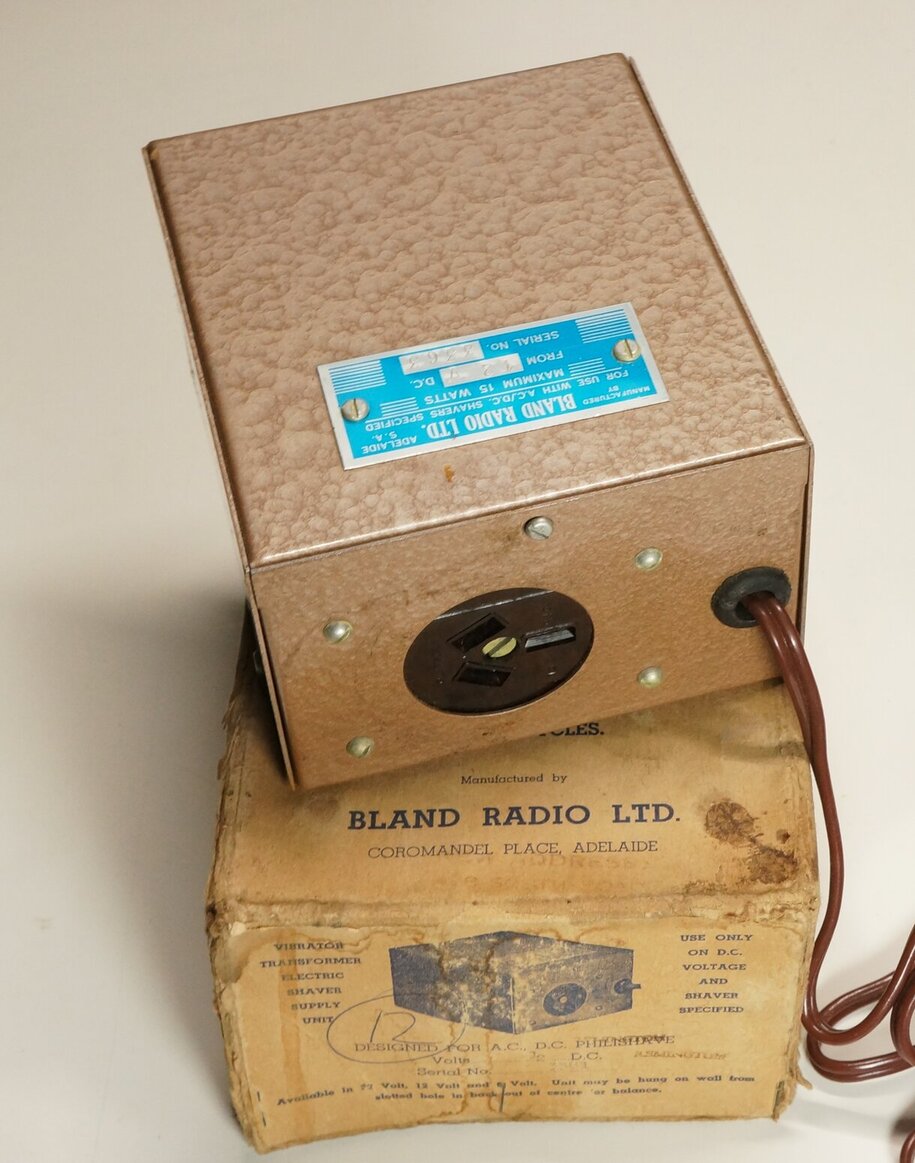
Shave in your car or from your home lighting plant with this inverter.
Some enthusiasts simply attached a 240
V socket to the side of their car radio to serve the same purpose.
For mantel radios and other small appliances,
existed another type of inverter rated up to about 40 W. These used a heavy
duty radio vibrator of the “dual-interrupter” type. The 100 Hz output was
satisfactory for radios, but not suited to frequency dependent loads, such
as turntable motors.


Smoothflo 6 to 240 V inverter provides 30 W.
More serious inverters were produced by the likes of Glenradio and Van Ruyten, using the previously mentioned 50 Hz power vibrator. These can provide 100 to 200 W, and allowed larger 240 V AC appliances, such as radiograms and televisions to be run off a 12, 32, or 110 V DC supply.
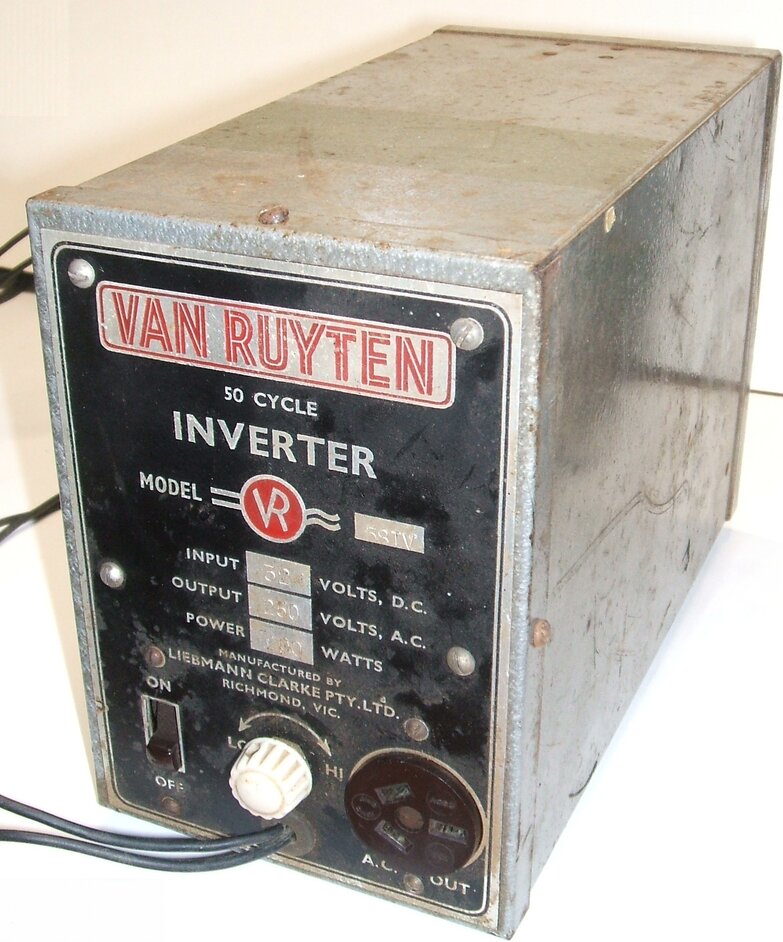
Van Ruyten 32 to 230 V 200 W inverter.
Details of the inverters shown can be seen
elsewhere on this website.
Inverters were also made specifically
for fluorescent lighting. One such unit from Glenradio was reviewed in
Radio Television & Hobbies, November 1955.
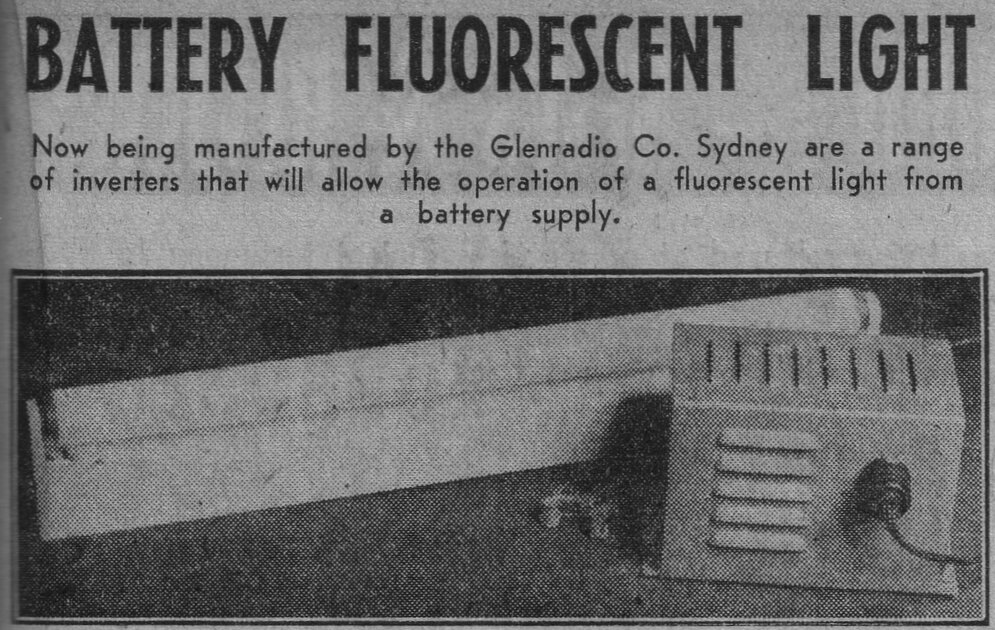
Glenradio fluorescent light works from 6 or 12 V.
This U.S. made 12V fluorescent lamp from Browning incorporates an internal vibrator inverter. It is described here https://www.cool386.com/browning/browning.html

Browning 15 W fluorescent lamp uses vibrator for 12 V DC operation.
Vibrators also ended up in TV receivers. Along with the previously mentioned Ekco mains/12 V portable set, was a 17” model from Ferris, for 240V AC, or 12 or 32 V DC operation. It was reviewed in Radio Television & Hobbies, November 1957.
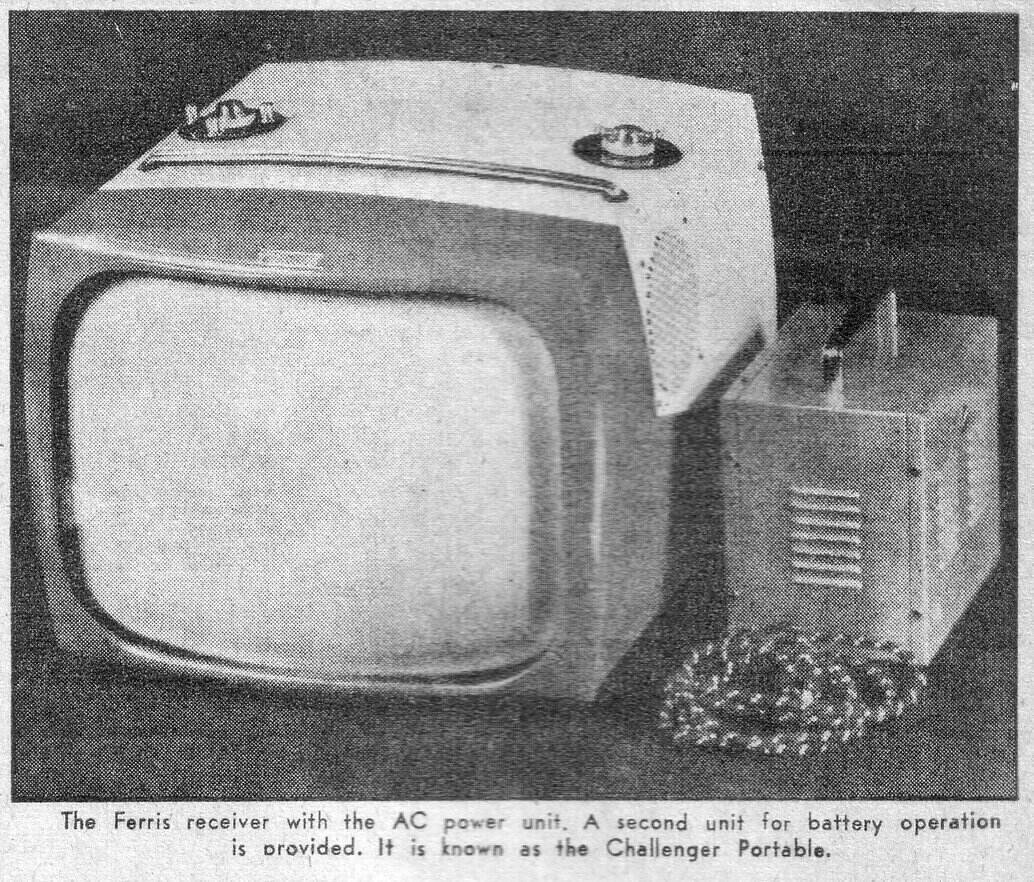
Ferris TV works from 12 or 32 V DC, or 240 V AC.
Test Instruments.
This ignition coil tester made by Vane
Electrical Instruments uses a vibrator to simulate distributor points.
Since the instrument is battery powered, the vibrator also provides high
voltage DC to test condenser leakage. https://www.cool386.com/vane/vane.html

Ignition coil tester uses vibrator to simulate distributor points.
Another test instrument was this University valve tester, which had the option of 240 V AC operation, or being powered from a 6 V battery. The latter was a useful feature for country servicemen away from power mains.
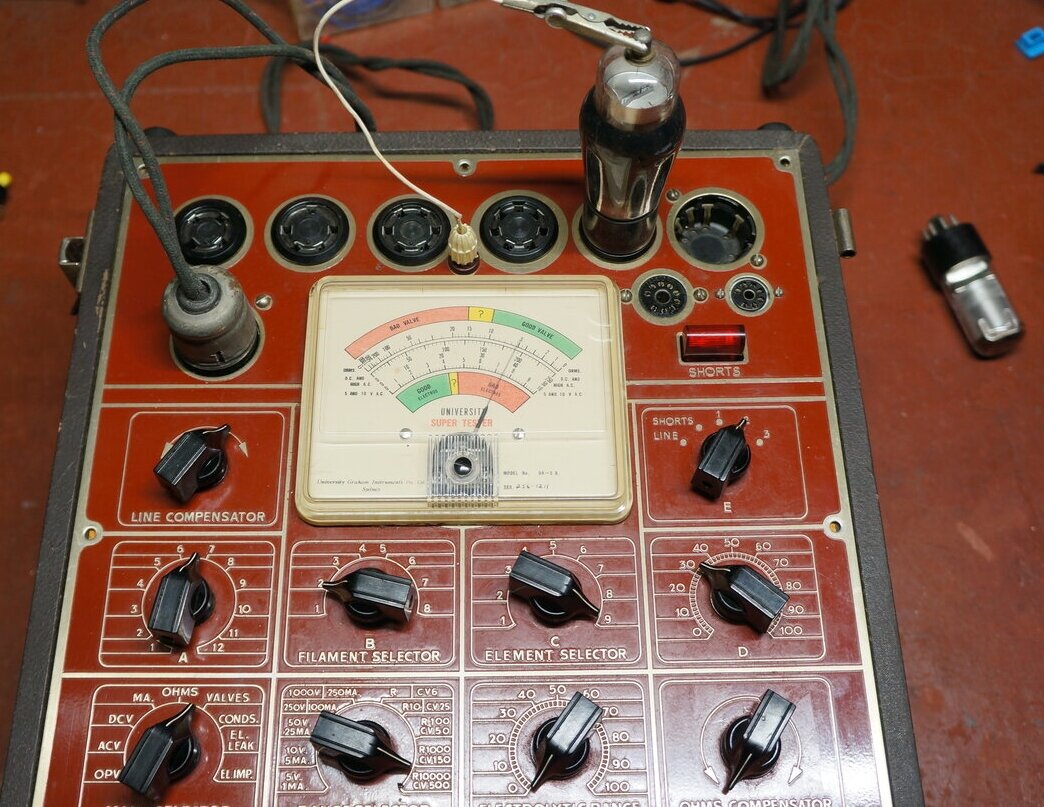
University valve tester
works from 240 V AC or a 6 V battery.
Final Days.
It is interesting to note that elsewhere
in the world, vibrator car radio manufacturing had ceased around 1961,
with hybrid, and then all-transistor sets taking their place. However,
in Australia, AWA continued producing the “Cruiser 6” 945-AZ and 946-AZ
car sets up until 1966.
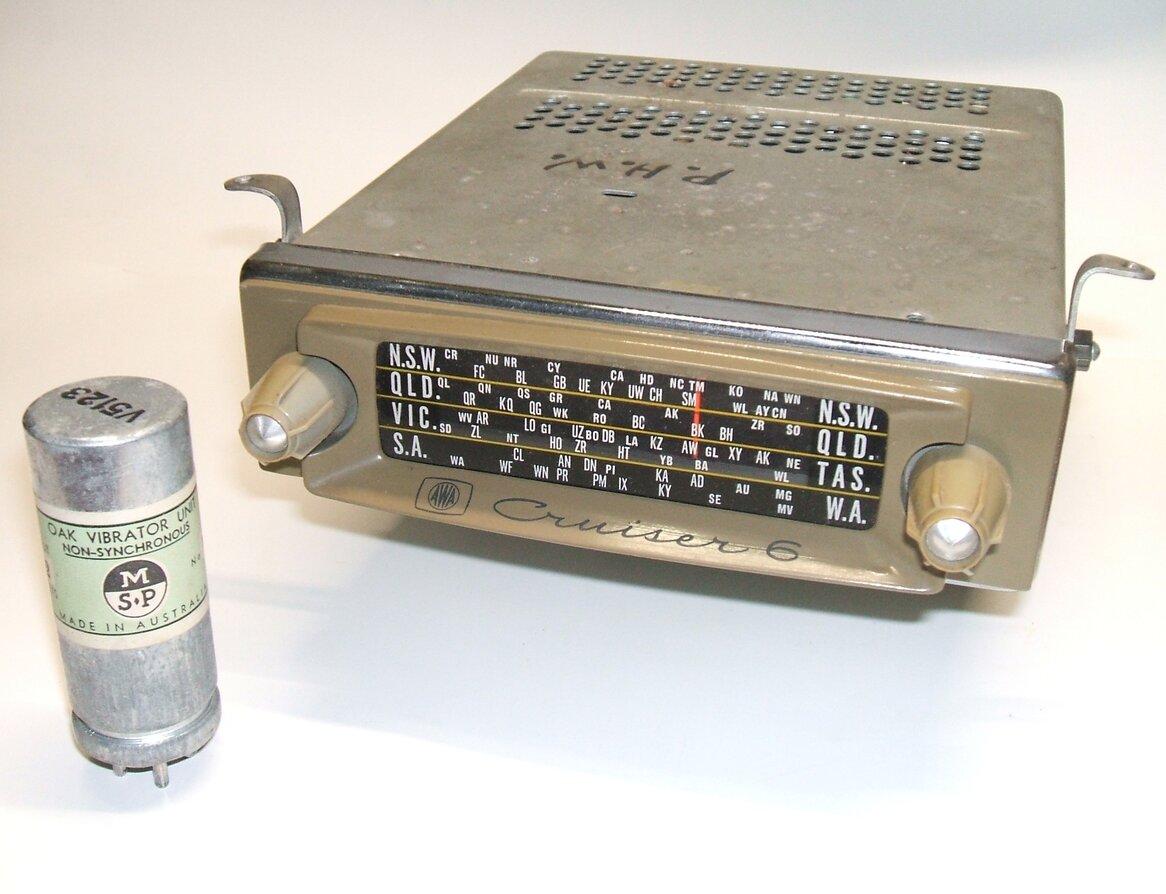
AWA 946-AZ. The last vibrator
powered car radio.
Such was the reliability of its design and the Oak vibrator, that it remained competitive with transistor sets for so long. In the U.S., vibrators remained in use for valve CB radios during the 1960’s. Vibrator manufacture came to an end by the mid 1970’s.
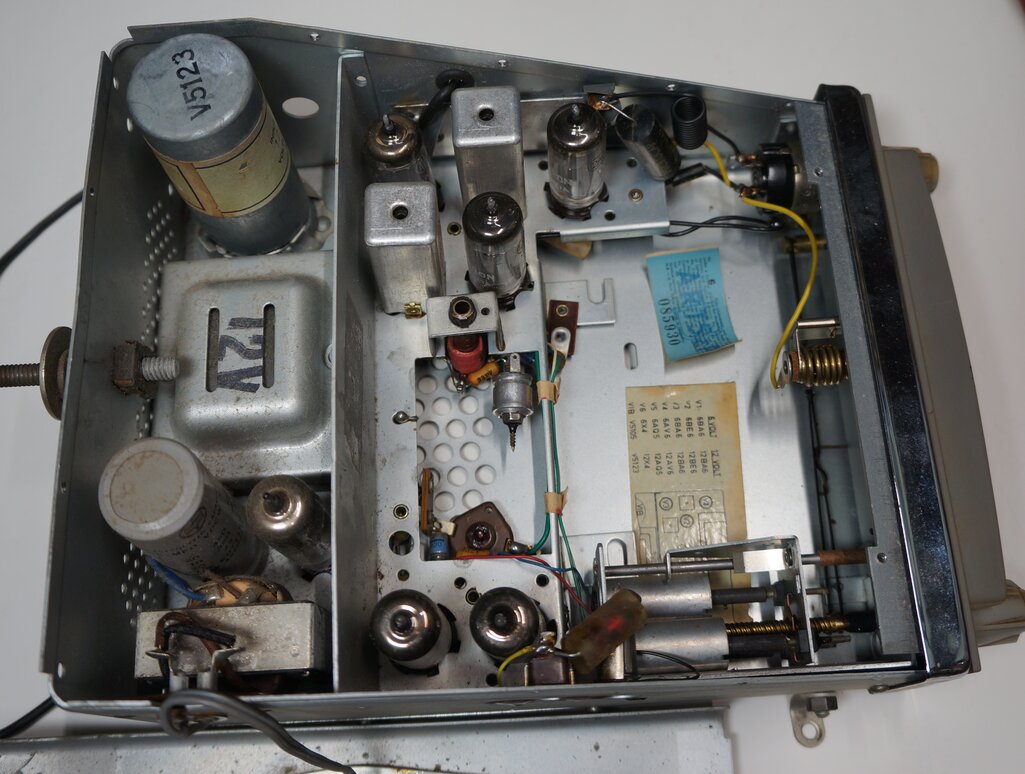
Inside the 946-AZ.
